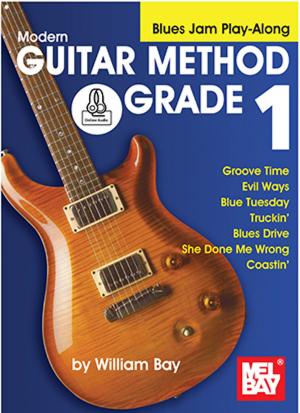Building Guitar Finger Strength and 26 Different ii-V-I Progressions
Nonfiction, Entertainment, Music, Instruments & Instruction, Guitar, General Instruments| Author: | Frank Vignola | ISBN: | 9781513407944 |
| Publisher: | Mel Bay Publications, Inc. | Publication: | May 20, 2016 |
| Imprint: | Language: | English |
| Author: | Frank Vignola |
| ISBN: | 9781513407944 |
| Publisher: | Mel Bay Publications, Inc. |
| Publication: | May 20, 2016 |
| Imprint: | |
| Language: | English |
In the Building Finger Strength section of this book, we will cover 12 different finger-strengthening exercises. Practice these exercises slowly and accurately before trying to build speed. On the optional practice-along recording you will find three different tempos for each individual exercise. This is to help you build up your speed and your finger strength one step at a time. Obviously beginners should start with the slow tempo. I also believe that the more advanced students should start with the slow tempo to build accuracy. I found when recording these exercises for the practice-along recording that the slowest tempo was the hardest to execute with no mistakes. Diligent practice will build flexibility and strength!
In the latter section of this book (26 ii-V-I Progressions), we will be looking at 26 different ways to play the ii-V-I chord progression. We will be working in the key of C. The ii chord is Dm7, the V chord is G7 and the I chord is C. It is recommended that you transpose these into other keys. These studies can be used for ear training and to facilitate improvisation on standard chord progressions.
In the Building Finger Strength section of this book, we will cover 12 different finger-strengthening exercises. Practice these exercises slowly and accurately before trying to build speed. On the optional practice-along recording you will find three different tempos for each individual exercise. This is to help you build up your speed and your finger strength one step at a time. Obviously beginners should start with the slow tempo. I also believe that the more advanced students should start with the slow tempo to build accuracy. I found when recording these exercises for the practice-along recording that the slowest tempo was the hardest to execute with no mistakes. Diligent practice will build flexibility and strength!
In the latter section of this book (26 ii-V-I Progressions), we will be looking at 26 different ways to play the ii-V-I chord progression. We will be working in the key of C. The ii chord is Dm7, the V chord is G7 and the I chord is C. It is recommended that you transpose these into other keys. These studies can be used for ear training and to facilitate improvisation on standard chord progressions.















